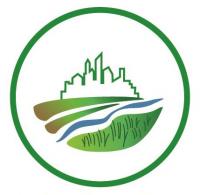Introduction
BWSR programs play a key role in protecting and restoring soil and water resources while also increasing landscape resiliency across Minnesota. The following information summarizes key steps for working with individual programs. Additional details are provided on the topic-oriented pages in the Toolbox. For training opportunities on many climate and resilience-related topics, see BWSR's Training Calendar.
1. Integrated water management planning uses available research, state and local plans, technical expertise, and updated design standards for stormwater and conservation projects, helping to achieve multiple landscape benefits while also increasing resiliency.
2. This toolbox and related technical resources can help to identify how current planning can be adjusted to further increase landscape resiliency and climate adaptation, and how projects can be designed to address regional needs.
1. Multiple grant programs are funded through the Clean Water Fund, including grants for watershed planning, watershed-based implementation funding, technical training, and more. The Clean Water Council, a body representing multiple agencies, legislators, and stakeholder organizations, makes recommendations to the Legislature as to how funds should be allocated among programs during each budget cycle.
2. Clean Water Fund grant programs are updated as they become available annually or periodically. Check "Apply for BWSR Grant Programs" for current availability.
1. The RIM Program focuses on permanently restoring wetlands, adjacent native grassland, wildlife habitat complexes and permanent riparian buffers that add diversity and overall landscape resiliency to landscapes. Restoring key habitat corridors following Minnesota’s Prairie Conservation Plan and other state plans also adds to landscape resiliency.
2. For existing projects, check availability of RIM Enhancement Funding to make improvements and increase long-term resiliency.
3. This toolbox and other technical resources can be used to plan projects in a way that will provide multiple landscape benefits and maximize landscape resiliency.
4. Develop strategies for the long-term stewardship of project sites.
1. The Erosion Control and Water Management Program, commonly known as the State Cost-Share Program, provides funds to SWCDs to share the cost of systems or practices for erosion control, sedimentation control, or water quality improvements that are designed to protect and improve soil and water resources.
2. Using multiple layers of water treatment by combining conservation practices can add to landscape resiliency; such as using cover crops or no-till agriculture in addition to field terraces and riparian buffers.
3. Develop strategies for the long-term stewardship of project sites.
Wetland Protection and Mitigation
1. Use and promote the use of structures, materials, techniques, approaches, and designs in wetland restorations that are durable and able to function under a wide range of future climate and hydrologic conditions.
2. Include and promote the inclusion of vegetative performance standards for wetland restorations that incentivize a diversity of species that are better able to adapt to changing climate and hydrologic conditions.
3. Prioritize and incentivize the restoration and preservation of resilient buffers to help better sustain wetland restorations in the face of changing climatic and hydrologic conditions.
4. Pursue and promote the use of long-term funding sources to maintain and adaptably manage wetland restorations.

